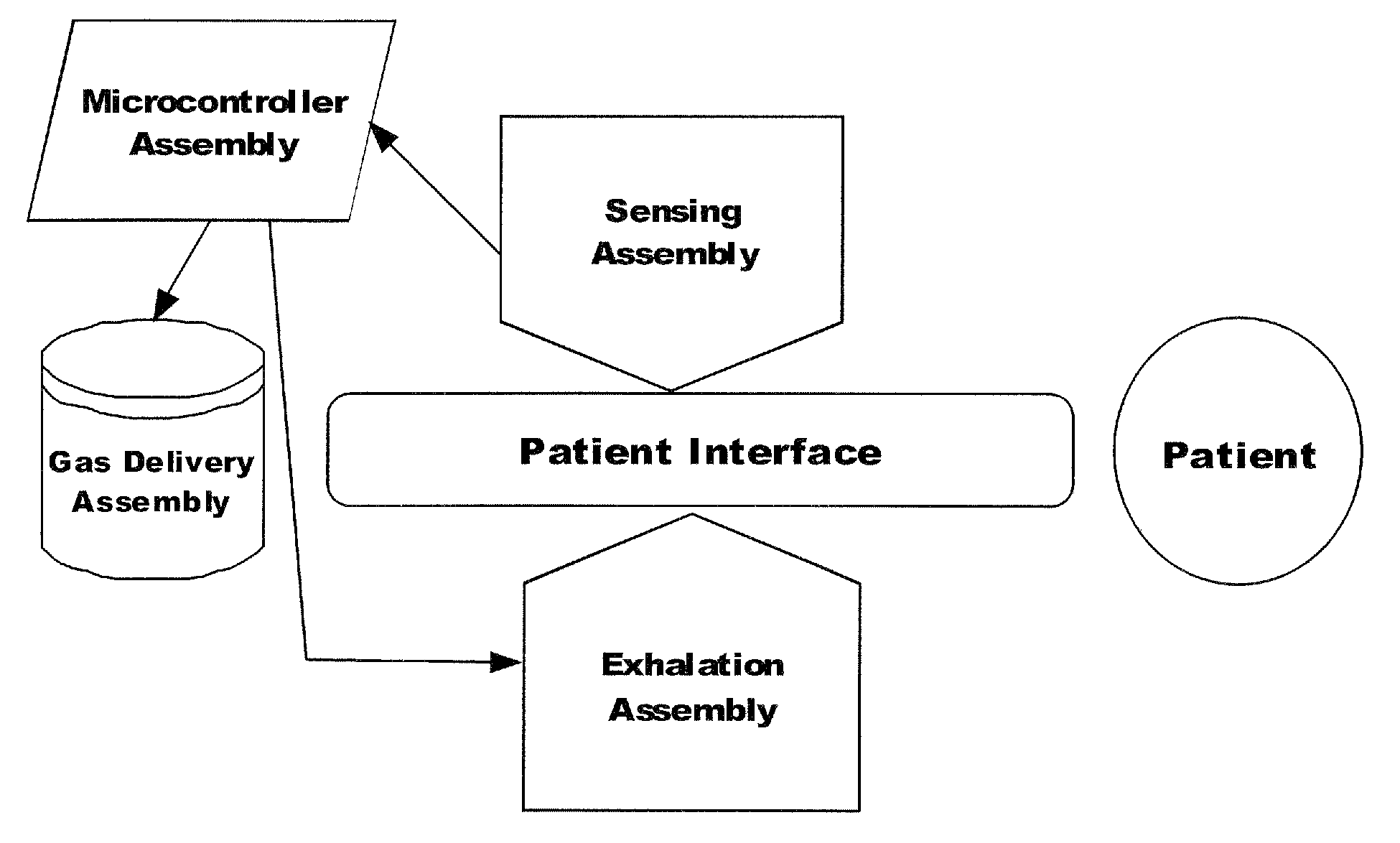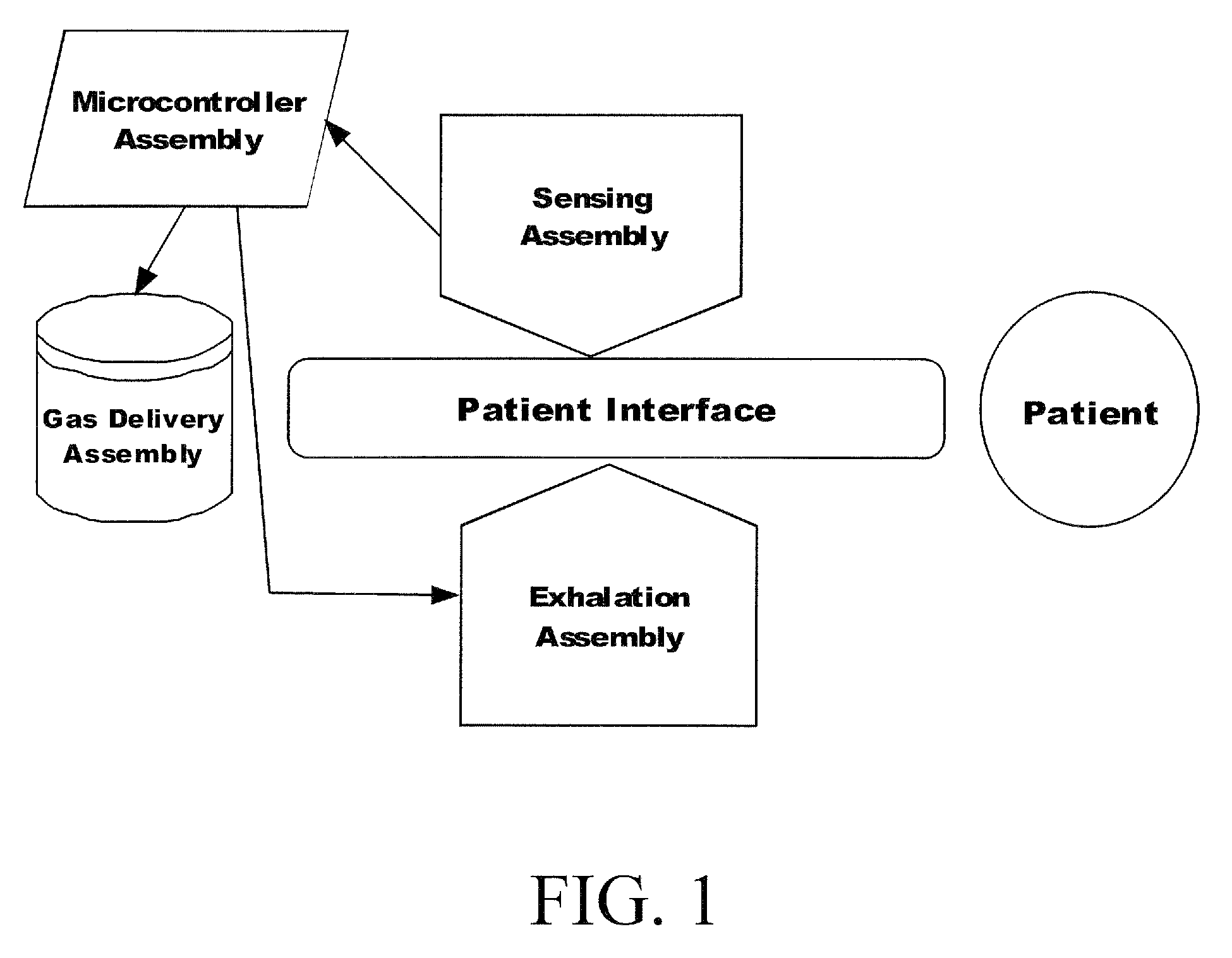Automated Inspiratory Muscle Training for Patients Receiving Mechanical Ventilation
a technology for mechanical ventilation and inspiratory muscles, which is applied in the direction of valve operating means/release devices, applications, diagnostic recording/measuring, etc., can solve the problems of reducing the weaning time after treatment with a ventilator, affecting and affecting the patient's diaphragm, etc., to achieve the effect of strengthening or maintaining the function of the inspiratory muscle and neuromuscular efficiency, reducing or preventing
- Summary
- Abstract
- Description
- Claims
- Application Information
AI Technical Summary
Benefits of technology
Problems solved by technology
Method used
Image
Examples
example 1
[0075]A single blind, randomized trial of inspiratory muscle strength training (IMST) in failure to wean (FTW) patients was conducted. Assigned groups of patients were similar with respect to age, gender, cause of respiratory failure, smoking history, SAPSII score (a mortality prediction index, where higher values suggest a. high death probability), MV settings, arterial blood gases when receiving full MV support, PaO2 / FiO2, prealbumin, duration of spontaneous breathing trials (SBT) tolerated (IMST 2.4±17.3 hours, p=0.84) and maximal volitional negative inspiratory pressure. Patients did not know if they had been assigned to the IMST or sham (control) training group.
[0076]IMST consisted of 4 sets of 6-10 breaths through a threshold inspiratory (Respironics Threshold PEP) device attached to a tracheotomy tube at the highest pressure setting the patients could tolerate. The initial training pressure setting was determined by starting at 4 cm H2O and increasing until the patient was un...
PUM
 Login to View More
Login to View More Abstract
Description
Claims
Application Information
 Login to View More
Login to View More - R&D
- Intellectual Property
- Life Sciences
- Materials
- Tech Scout
- Unparalleled Data Quality
- Higher Quality Content
- 60% Fewer Hallucinations
Browse by: Latest US Patents, China's latest patents, Technical Efficacy Thesaurus, Application Domain, Technology Topic, Popular Technical Reports.
© 2025 PatSnap. All rights reserved.Legal|Privacy policy|Modern Slavery Act Transparency Statement|Sitemap|About US| Contact US: help@patsnap.com



